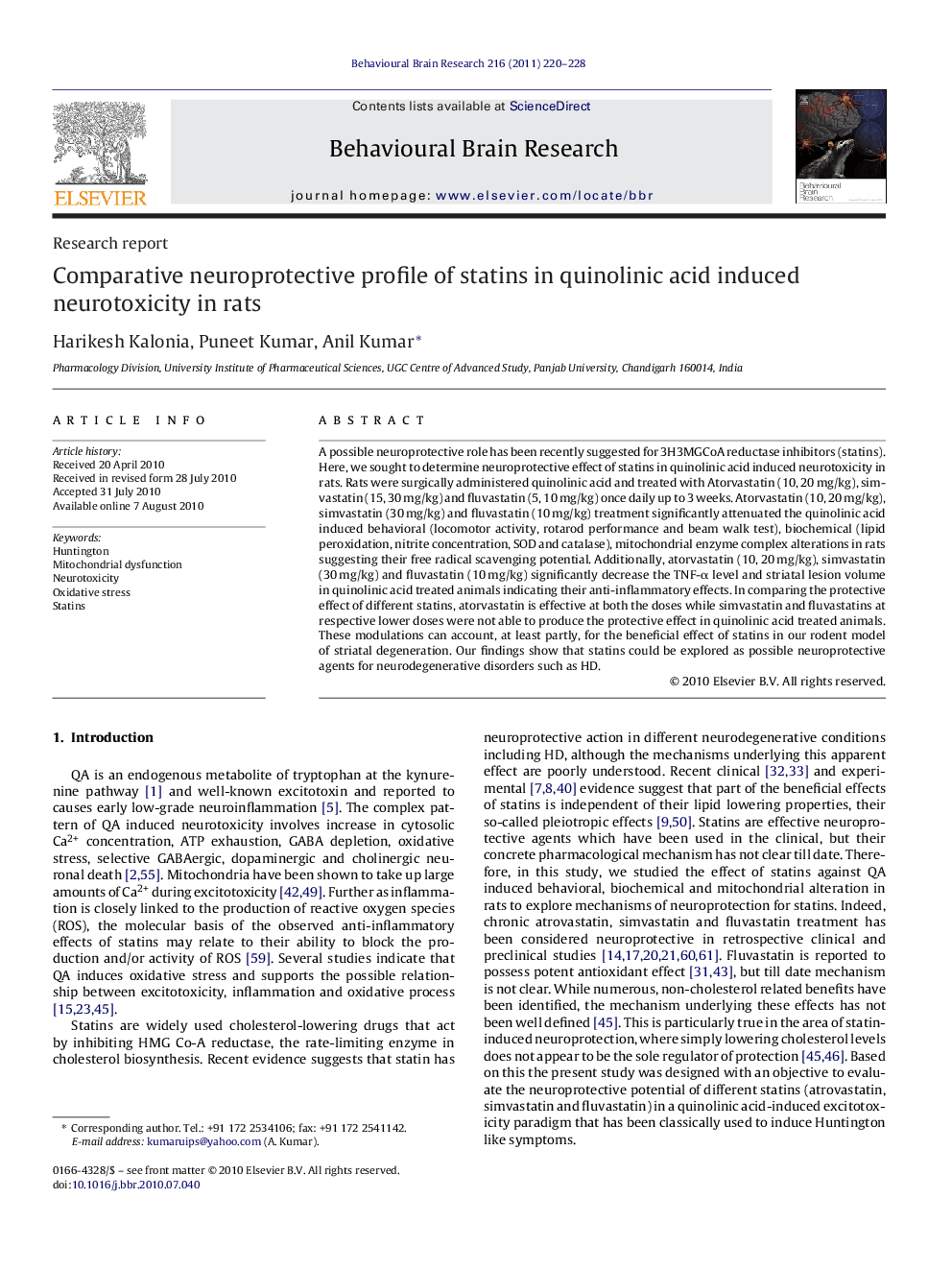| Article ID | Journal | Published Year | Pages | File Type |
|---|---|---|---|---|
| 4314003 | Behavioural Brain Research | 2011 | 9 Pages |
A possible neuroprotective role has been recently suggested for 3H3MGCoA reductase inhibitors (statins). Here, we sought to determine neuroprotective effect of statins in quinolinic acid induced neurotoxicity in rats. Rats were surgically administered quinolinic acid and treated with Atorvastatin (10, 20 mg/kg), simvastatin (15, 30 mg/kg) and fluvastatin (5, 10 mg/kg) once daily up to 3 weeks. Atorvastatin (10, 20 mg/kg), simvastatin (30 mg/kg) and fluvastatin (10 mg/kg) treatment significantly attenuated the quinolinic acid induced behavioral (locomotor activity, rotarod performance and beam walk test), biochemical (lipid peroxidation, nitrite concentration, SOD and catalase), mitochondrial enzyme complex alterations in rats suggesting their free radical scavenging potential. Additionally, atorvastatin (10, 20 mg/kg), simvastatin (30 mg/kg) and fluvastatin (10 mg/kg) significantly decrease the TNF-α level and striatal lesion volume in quinolinic acid treated animals indicating their anti-inflammatory effects. In comparing the protective effect of different statins, atorvastatin is effective at both the doses while simvastatin and fluvastatins at respective lower doses were not able to produce the protective effect in quinolinic acid treated animals. These modulations can account, at least partly, for the beneficial effect of statins in our rodent model of striatal degeneration. Our findings show that statins could be explored as possible neuroprotective agents for neurodegenerative disorders such as HD.
Research highlights▶ Intrastriatal quinolinic acid reproduces Huntington like behavioral alterations. ▶ Antioxidant/anti-inflammatory/mitochondrial effect of statins. ▶ Neuroprotective potential of statins against quinolinic acid induced Huntington like symptoms.
